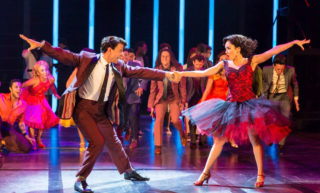FocuS on EötvöS
Sinfonieorchester Basel
16 February 2022
Marcus Weiss, Saxophone
Péter Eötvös, Conductor
Péter Eötvös - Sirens’ Song for Orchestra
Péter Eötvös - FOCUS, Concerto for Saxophone and Orchestra
Zoltán Kodály - Háry János Suite
Born in Transsylvania (now part of Romania) in 1944 the Hungarian Peter Eötvös ranks among the most prominent composers, conductors and teachers of our time. On the recommendation of his countryman and fellow composer Zoltán Kodály (1882-1967), Eötvös was admitted to the conservatory of music in Budapest. Under the baton of Eötvös himself, one of Kodály’s best-known scores, the suite from his Hungarian folk opera Háry János, will be performed in this month’s concert, while two of the composer’s own recent works will see their Swiss premiere.
Háry János, both the suite and the original opera, famously starts with a big ‘orchestral sneeze’. In many cultures, sneezing has a metaphysical meaning. Typical for the fickle climate in the Netherlands, for instance, sneezing three times in a row holds a promise (or is it a wish?) for good weather the next day. In Hungary, a proper achoo at the beginning of a story, emphasises that the story to be told is true. In Háry János, a beautiful and immediately appealing piece of music, the eponymous protagonist, a soldier in the Austrian army in Napoleonic times, tells wishful, boastful and unlikely tales while deep down longing to be back in his hometown; the opening sneeze clearly has to be taken with a pinch of salt.
After the prelude, the second movement depicts the Viennese imperial palace’s musical clock, in which the Glockenspiel introduces the march of the wooden soldiers. The melancholy third movement, a song without words, expresses Háry János and Orsze’s (his childhood darling) longing for home. The movement is characterised by a haunting viola solo and a homesickness-inducing cimbalom. In the fourth movement the trombones lead the way evoking the battle of Napoleon, while the lamenting saxophone symbolises his defeat. The intermezzo (fifth movement), a whirling Hungarian csárdás, gives the cimbalom once again a chance to shine. In the exuberant last movement, the music portrays our hero Háry in front of the Emperor reeling off his extraordinary tales.
While Eötvös too has been influenced by folk music, and more generally by the specific rhythm of the Hungarian language, his Sirens’ Song is indebted to Homer’s Odyssey. For a composer it is, understandably, a fascinating challenge to capture the seductive, yet calamitous voices of the mythical creatures, but Franz Kafka, who asserted the sirens misled Odysseus by not singing, and James Joyce (through his novel Ulysses, the Roman name for Odysseus) also served as Eötvös’ literary sources.
Rather than words, Eötvös’s brand new saxophone concerto FOCUS, co-commissioned by the Sinfonieorchester Basel, is inspired by the visual.
Having played and written a lot of music for theatre and cinema early on in his career, Eötvös thus returns to his roots. The focus points of the composition are those where soloist and orchestra, just like a film camera, converge or focus, or in musical terms, land on the same tone. As Eötvös explains, in those moments the sound transforms from blurred or diffuse to sharp, focused and unisono. In the fourth and last movement, soloist and orchestra slowly progress towards the final focus point (and the last note of the concerto) E-flat, in German called Es – for saxophone. To dwell on these interesting moments in the musical flow is exactly the idea of the concerto. Guided by the composer himself, this will be an extraordinary experience.
These English program notes have been published in the magazine of the Sinfonieorchester Basel.






Comments